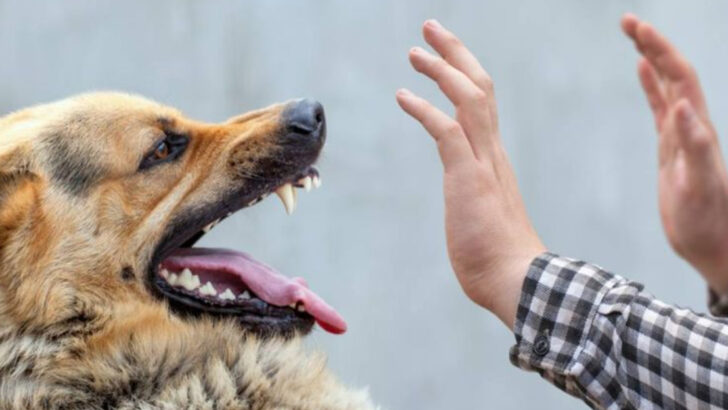Your heart spikes.
Your breath catches.
A dog is charging—and it’s not yours.
Whether it’s barking or dead silent, those pounding paws mean one thing: you’ve got seconds to react.
And panic? That’s the one move that never works.
What you do next can mean the difference between walking away calmly or getting hurt. No time for second-guessing, no room for maybes—just solid, real-world tactics to protect yourself without escalating the situation.
This isn’t about being a hero.
It’s about being smart, steady, and safe.
Here are 13 proven ways to handle a charging dog that doesn’t know you—because preparation beats panic every single time.
Stay Calm and Still

When faced with a charging dog, staying calm is your first line of defense. Dogs sense fear and can become more aggressive if you panic. By remaining still and composed, you project confidence and minimize perceived threat.
Stand upright, keep your hands by your sides, and avoid direct eye contact with the dog. This stance can often defuse the situation, as the dog may lose interest if it perceives no threat or challenge.
Remember, dogs often charge out of curiosity rather than aggression. Taking deep breaths can help maintain composure and reassure the animal.
Use a Firm Voice

Addressing a charging dog with a firm voice can assert your dominance. Dogs react to tone; a confident command might deter its approach. Use short, authoritative phrases like “No!” or “Stay back!”
These commands signal you’re in control. It’s crucial to maintain a steady voice; shouting may escalate the situation. This approach can be particularly effective if the dog has some training. Remember, it’s not about aggression but showing authority.
Pairing verbal commands with a strong stance can further reinforce your position, potentially stopping the dog in its tracks.
Avoid Direct Eye Contact
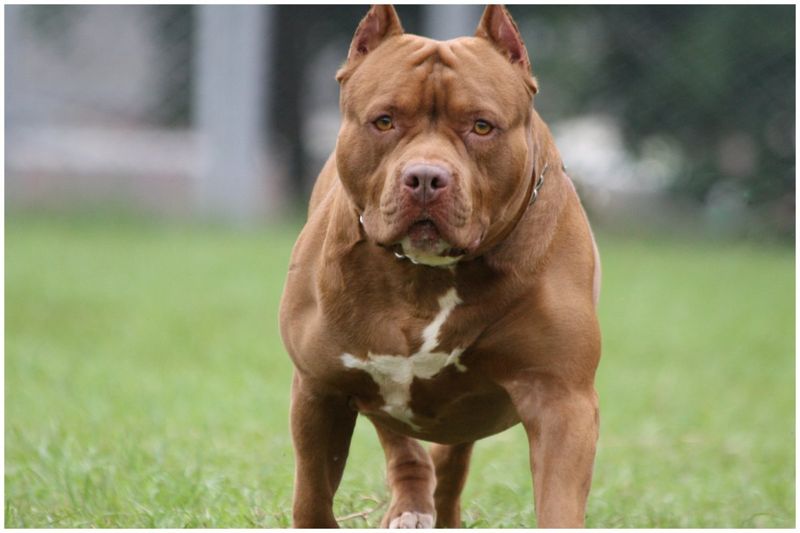
Direct eye contact can be perceived as a challenge or threat to dogs. By averting your gaze, you signal peaceful intentions. This subtle communication can prevent further aggression from a charging dog.
Focus on the dog’s body language instead, as this can provide clues to its intentions and emotional state. Avoiding eye contact doesn’t mean ignoring the dog; stay aware of its movements and maintain a neutral posture.
This approach helps in de-escalating the encounter, potentially calming the dog and reducing the likelihood of an attack.
Use an Object as a Barrier
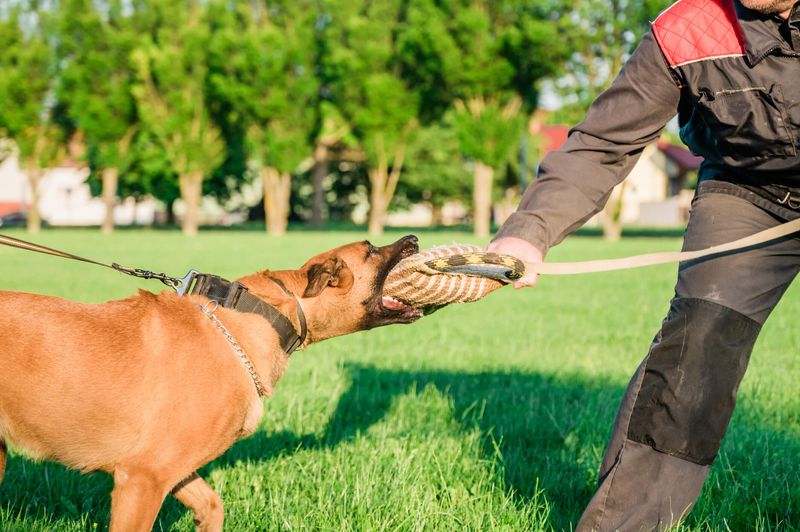
Creating a physical barrier can protect you from a charging dog. Use any available object—a backpack, purse, or jacket—to create distance. Holding an item in front of you can redirect the dog’s attention away from your body.
This strategy can stop a dog from making physical contact. The object acts as a shield, giving you space and time to assess the situation. Ensure your chosen item is something you can part with if necessary.
This tactic prioritizes your safety, potentially deterring the dog from advancing further.
Back Away Slowly
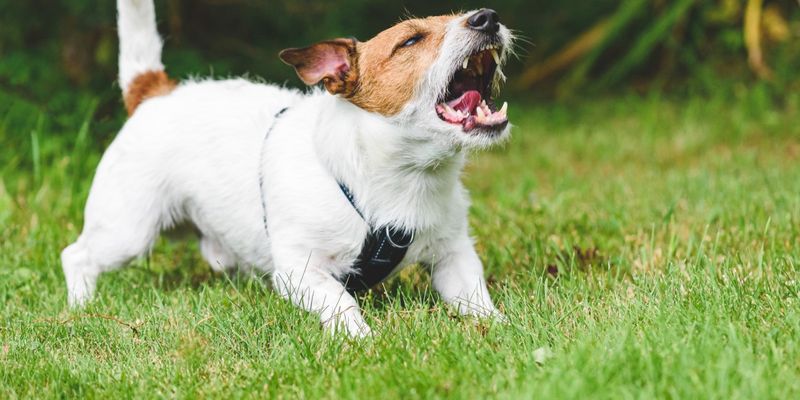
Retreating slowly from a charging dog can reduce perceived threat. Quick movements might provoke further aggression, while slow steps show non-hostility. Facing the dog, move back gradually to avoid startling it.
This method gives the dog space to retreat if it chooses. By maintaining a calm demeanor and steady pace, you signal that you mean no harm. This approach allows you to safely distance yourself without triggering the dog’s chase instinct.
Remember, sudden movements can escalate tension, so keep your retreat measured and deliberate.
Distract the Dog
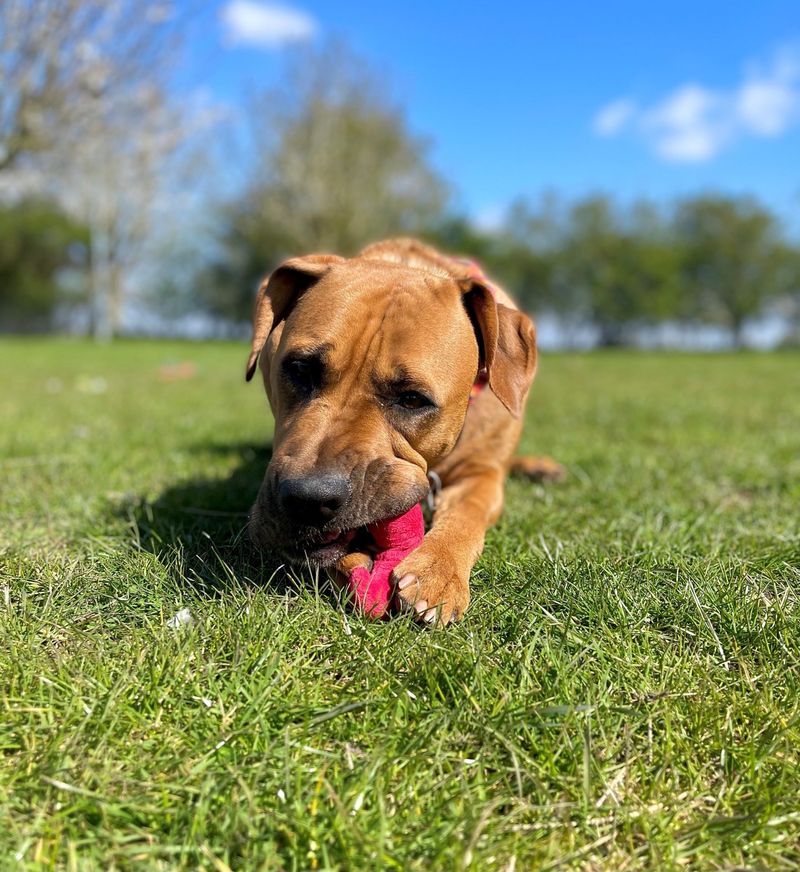
Distraction can be a powerful tool against a charging dog. Toss an item like a toy or even your hat to divert the dog’s attention. This tactic can shift its focus from you to the object, potentially stopping its advance.
It’s a simple yet effective way to interrupt the dog’s intent. The key is to act quickly and decisively. This method creates an opportunity for you to back away safely while the dog investigates the new object of interest.
Always keep a watchful eye on the dog’s reaction to adjust your strategy as needed.
Call for Help
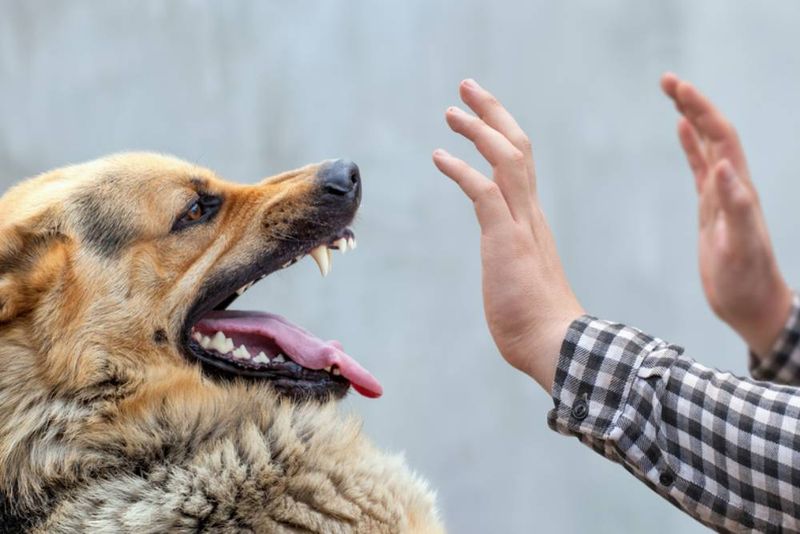
In some situations, calling for help is the best option. Use your phone to contact local authorities or animal control for immediate assistance. Alerting nearby people can also provide support, as more individuals can deter the dog.
While waiting for help, maintain a safe distance and keep the dog in sight. This approach ensures that professional help is on the way, minimizing the risk of injury.
It’s a proactive measure, showing you prioritize safety and are taking steps to resolve the situation responsibly. Remember, it’s okay to ask for help.
Use a Dog Whistle
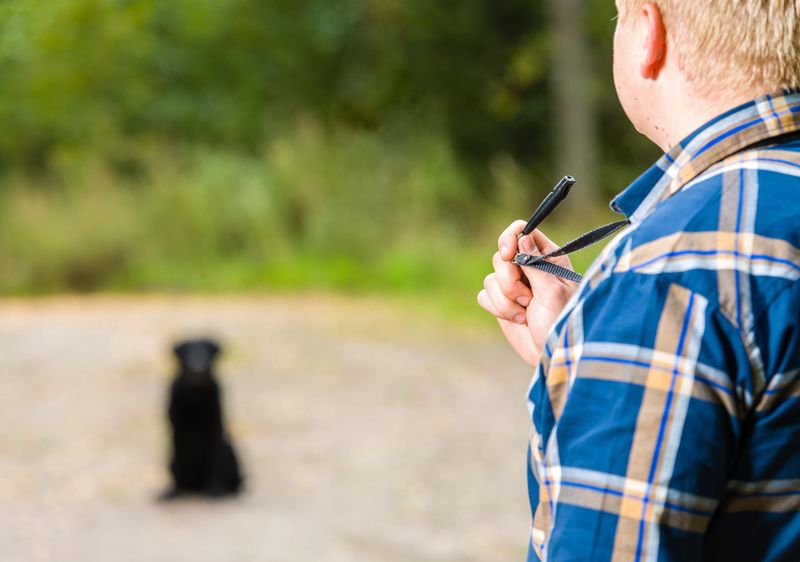
A dog whistle can be a useful deterrent against a charging dog. The high-pitched sound is usually inaudible to humans but can interrupt a dog’s behavior. If you carry a dog whistle, use it when a dog charges to potentially stop it in its tracks.
This method is non-threatening and doesn’t rely on physical confrontation. It’s particularly beneficial in areas where dogs are common.
The whistle’s sound can confuse or distract the dog, allowing you time to move to safety. Keep the whistle accessible as a precautionary measure.
Stand Tall with Confidence
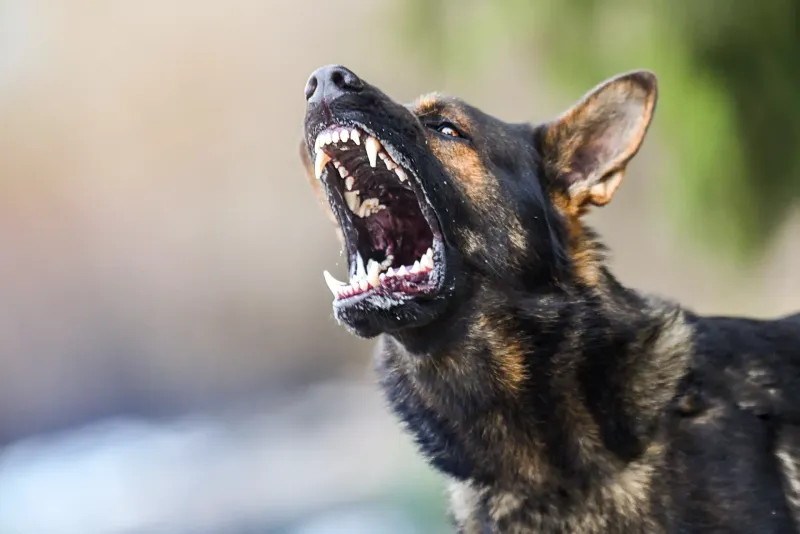
Body language speaks volumes to dogs. Standing tall with confidence can deter a charging dog by signaling authority. Keep your shoulders back and head high. This posture shows that you are not an easy target.
Dogs often assess situations based on perceived strength. By appearing larger and unafraid, you might discourage the dog from continuing its approach. Confidence can often override aggression in animals.
This strategy is about projecting calm dominance, reassuring the dog that you are in control without needing to engage physically.
Use a Water Spray
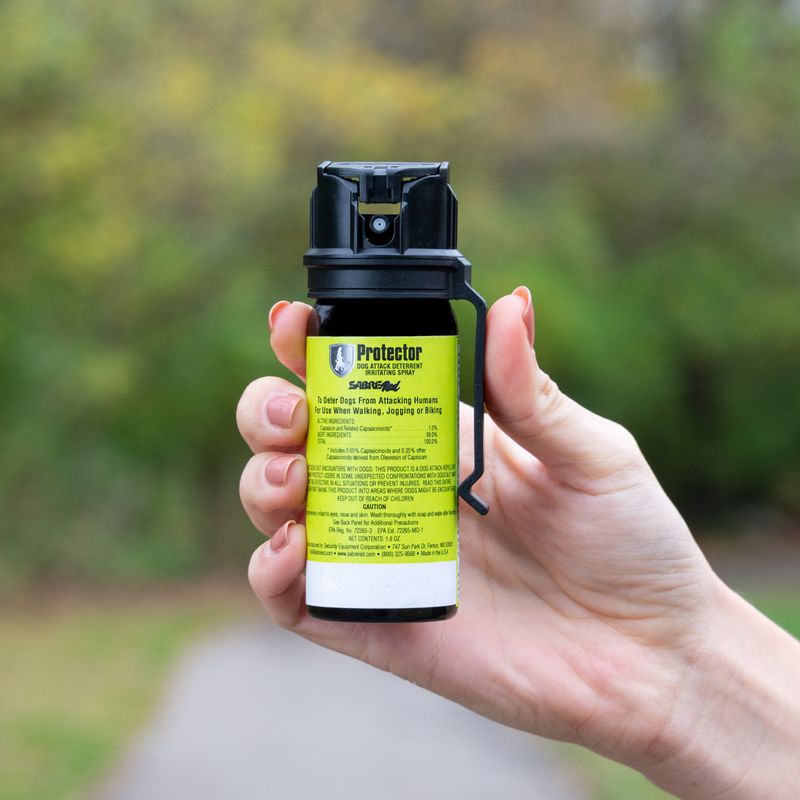
Water can be an unexpected yet effective deterrent. If you have access to a spray bottle or water source, use it to surprise the dog. A quick squirt can momentarily confuse or deter the animal without causing harm.
This method is gentle and non-aggressive, suitable for situations where you need a quick, harmless intervention. Water sprays are often used in training, making them familiar deterrents for some dogs.
Always aim for the body, not the face, to avoid unnecessary irritation. Use this method if it’s safe and convenient.
Create Noise
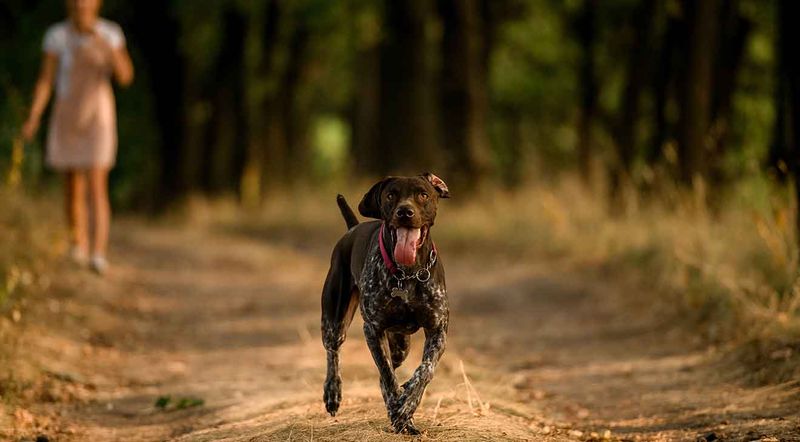
Noise can disrupt a charging dog’s focus. Clapping your hands or stomping your feet may startle the animal, making it reconsider its approach. This method relies on the element of surprise.
Dogs often react to sudden, unexpected sounds, which can halt their advance. This tactic is especially useful if you have no other tools at your disposal. Ensure your movements are confident to avoid escalating the situation.
The goal is to interrupt the dog’s charge without provoking further aggression, buying you time to retreat safely.
Offer Treats (If Safe)
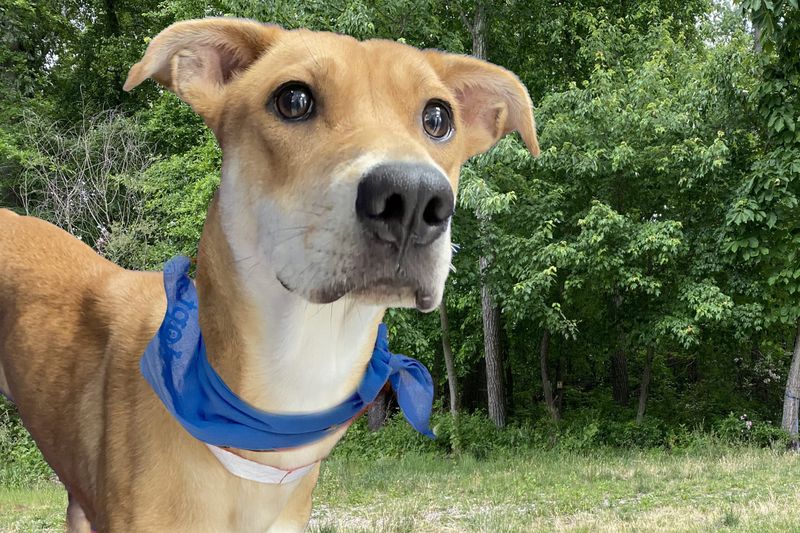
Offering treats can be a peaceful way to stop a charging dog, turning a potential threat into a friendly encounter. If you have dog treats handy, toss them towards the dog from a safe distance.
This can pique an aggressive dog’s interest, shifting focus from aggression to curiosity. It’s a gesture of goodwill that might defuse tension. Ensure you’re at a safe distance to avoid sudden reactions.
This approach is rooted in positive reinforcement, familiar to dogs accustomed to training. Use this method only if you’re confident it’s safe.
Use a Laser Pointer

Imagine being suddenly confronted by a fast-approaching dog with no time to spare. A laser pointer might be your unexpected ally in this situation. By directing the laser light towards the ground, you may capture the dog’s attention.
As the dog becomes intrigued by the moving dot, it might halt or change direction, providing you valuable seconds to assess your next move. This method capitalizes on a dog’s natural curiosity and playfulness.
Not only is this approach innovative, but it also minimizes confrontation, offering a peaceful resolution to a potentially dangerous encounter.

